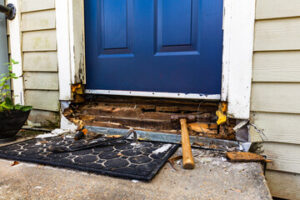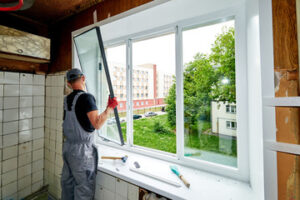Workshop Aziendale is a structured event for employee learning that typically includes interactive activities. It is a type of training and can be conducted in person or virtual.

Leadership workshops build skills that strengthen close work teams. They can also be focused on problem-solving and include simulations. Other corporate workshops may cover presentation skills or financial literacy.
Strengths Finder is an assessment tool that helps individuals understand and develop their talents. Unlike traditional assessments, it measures the innate patterns of thought, feeling and behavior that distinguish individuals from one another. The strengths-based approach is a powerful way to build self-esteem, increase job satisfaction and foster teamwork in your company.
During this workshop, participants receive their personalized strengths reports and discuss how to apply them in their work. They learn what their top strengths are, how to identify the energizing and non-energizing aspects of their jobs, and strategies for improving their productivity. They also learn how to effectively communicate with their colleagues and supervisors using their strengths.
The workshop is led by a certified StrengthsFinder coach who is trained to use the tool with groups of participants. It includes an introductory session that provides an overview of the 34 signature talent themes, as well as an advanced session that discusses theme dynamics and strategic partnerships. The workshop also teaches participants how to recognize the talents of their peers and how to create teams with complementary strengths.
In addition to improving employee engagement and boosting team productivity, a strengths-based workshop can help employees find career paths that align with their natural skill sets. According to a Gallup study, people who are engaged in roles that capitalize on their natural talents are 23% more likely to be satisfied with their jobs. This is especially important for companies looking to attract and retain top talent.
The Strengths Finder workshop also helps individuals discover their strengths in different environments, including at work and home. The workshop is an excellent opportunity for managers to get to know their team members on a deeper level by discussing their strengths and how they can be applied in the workplace. As a result, this workshop leads to improved teamwork and increased collaboration, which can be measured by the quality of communication between members and the overall performance of the team. The workshop can also be a great opportunity for new hires to learn about their colleagues’ strengths and build trust in the organization.
Inner Child Workshop
The Inner Child workshop is designed to help individuals reconnect with their most vulnerable parts of themselves in a safe and empathetic environment. It focuses on healing unresolved emotional wounds from childhood and embracing their inner joy, creativity, and power.
The workshop uses a variety of techniques and methods, including creative exercises such as journaling, drawing, and playing with clay. It also uses breathing techniques, movement, and meditative exercises. During the workshop, participants will learn to connect with non-wounded aspects of their Inner Child and heal at a core/root level. This process allows for long-lasting shifts.
During the workshop, participants will work with a trained Inner Child therapist who provides a supportive and nurturing space for participants to explore their emotions. The therapist will also teach the participants how to cultivate and nurture their relationship with their Inner Child. This process is similar to that of psychotherapy and some spiritual practices, but it is more holistic and incorporates group interaction and personal reflection.
The Inner Child Workshop is suitable for anyone who has experienced trauma from childhood, struggle with relationships, identifies as a people-pleaser, or feels as though they don’t know themselves. However, it is especially beneficial for those who have experienced severe childhood trauma and struggle to cope with the emotions associated with that experience.
In addition to addressing emotional issues, the Inner Child workshop can help you identify your most important priorities in life. It can also help you reclaim your sense of self and understand the root causes of problems in your relationships. Moreover, the process of healing your Inner Child can also lead to more clarity and passion in your work and life.
Decision Making Workshop
The quality of decisions made by leaders have a significant impact on the direction and trajectory of projects, teams and entire organizations. Making the right decision requires more than choosing a path; it is about understanding the reasons behind that choice, anticipating its effects and owning the results.
Effective decision making requires navigating complexity, embracing uncertainty and considering stakeholder perspectives. It is about bringing the whole team together, encouraging diversity of thought and using tools to surface hidden insights. In this workshop, participants develop skills to make better choices in their professional and personal lives.
Participants will explore a flexible framework to break through analysis paralysis and enable timely, high-quality, collaborative decisions that deliver better outcomes. They will learn daily practices and habits they can apply on the job to be more nimble in decision-making.
During this highly interactive workshop, participants will assess their own decision-making capabilities and discover how they can better leverage the diverse viewpoints of their teams to make more successful decisions. They will also gain an understanding of a proven framework for bridging differences and developing mutually agreeable solutions.
Through a series of games, activities and role plays, participants will experience how to make effective decisions in a variety of situations, analyzing both risks and rewards. They will also gain an understanding of the steps of responsible decision-making, including clarifying objectives, gathering information, generating alternatives, weighing options, making a decision and evaluating the outcomes.
When managing a project with multiple stakeholders, making the best decision can feel like a impossible task. This practical and fun workshop will help to overcome the common challenges of juggling different working styles, polar opinions and team politics by equipping participants with a tool that helps them turn ambitious ideas into actions. The Action Board is an easy to use tool that encourages people to ask key questions before arriving at a decision; such as who needs to be involved, how the result could impact people and the organization’s values. The tool is an incredibly useful way to facilitate effective decision-making and build confidence in leadership.
Knowing Your Purpose Workshop
Knowing your purpose is the compass that guides your life and decision-making from moment to moment. During this workshop, you will explore your personal gifts, passions, and values and learn to set goals that are aligned with those core beliefs. You will also uncover your limiting and empowering beliefs to identify the underlying cause of any misalignment in your life.
You will reassess your well-being using the research-based Resilience @ Work framework and uncover your strengths through the strength discovery exercise. You will explore the extent to which inherited norms shape your definition of success and develop an initial plan for how you will integrate a living sense of purpose into your everyday work life. You will also learn about and practice tools that increase your living sense of purpose, including unearthing your unique strengths, connecting authentically with peers around common life questions and designing purpose projects.
The Knowing Your Purpose workshop is led by a trained facilitator who will guide you through group discussions and activities. You will explore different ways to refocus your time and energy in order to reach new professional heights. Whether you are an entrepreneur, a business leader or a personal development professional, organising a workshop can make a huge difference in your ability to impact the world and influence others.
To conduct a successful team purpose workshop, follow the process outlined by Simon Sinek in his book Find Your Why. The team-based version of this process is longer than the individual version and includes four steps: opening the discussion, mining team members’ stories, drafting the purpose statement, and closing the discussion. Start the workshop by showing a video of Sinek’s TED talk about purpose to ensure that all participants understand the basic concepts. Then, have each member recount a story that has moved them in the past and discuss how these stories might help the team.
Once you have drafted your purpose statement, share it with the group. Encourage everyone to use it as a reference point when making important decisions. If necessary, have the team review and edit the statement to ensure that it accurately captures the essence of their shared purpose.








